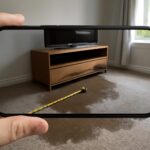Blog Details
- Home
- Blog details

Water Damage Insurance Claims Explained
- Sep 19, 2024
- Sohel
- Comments
Water damage is one of the most common and costly insurance claims for homeowners. Burst pipes, leaky roofs, appliance malfunctions, and storm damage can all cause significant destruction. But not all types of water damage are covered by insurance. Understanding what your policy includes and how to file correctly can make the difference between a fair settlement and a denied claim.
What Types of Water Damage Are Covered?
Most standard homeowners insurance policies cover sudden and accidental water damage, such as:
- Burst pipes or water heater leaks
- Storm-created openings in roofs or windows
- Accidental overflow from appliances
- Fire suppression sprinkler malfunctions
What Is Not Covered?
Insurance usually won’t pay for:
- Gradual leaks or wear and tear
- Poor maintenance issues
- Flooding from rivers or rising groundwater (requires separate flood insurance)
- Sewer or drain backups unless you purchased additional coverage
Step 1: Act Fast to Prevent Further Damage
The longer water sits, the worse the damage becomes. Immediately:
- Shut off the main water supply if plumbing is the source.
- Move furniture and belongings to a dry area.
- Use fans and dehumidifiers if available.
- Document all actions taken.
Step 2: Document the Damage Thoroughly
Your claim’s success depends on solid evidence. Capture:
- Photos and videos of the water intrusion and affected areas.
- Any ruined belongings (furniture, electronics, flooring).
- Receipts for emergency services like water extraction or temporary repairs.
Step 3: File Your Claim Promptly
Notify your insurance provider right away. Provide:
- A timeline of when and how the damage occurred.
- Documentation and receipts.
- Proof of mitigation efforts (so they can’t blame you for worsening the damage).
Step 4: Prepare for the Adjuster Visit
The adjuster will inspect your home and determine coverage. To strengthen your case:
- Present all photos, videos, and receipts.
- Consider hiring a water damage restoration company for a professional estimate.
- Ask questions about what will be repaired versus replaced.
Common Issues with Water Damage Claims
- Denied as “maintenance issues” instead of sudden accidents.
- Partial payments that only cover cleanup, not full repair.
- Delays in processing due to disputes over cause of damage.
Recent posts
Roof Damage Insurance Claims – Storms, Hail, and…
Insurance Claim Denials – How to Fight Back…
FAQs
Only if the mold is a direct result of a covered water loss and discovered promptly. Long-term mold from neglected leaks is usually excluded.
Yes, if the damage makes your home unlivable, most policies cover temporary housing.
Sudden and accidental leaks are covered, but not gradual wear and tear.
It’s not required, but being there lets you point out all visible damage and ensure nothing is overlooked.
Your own homeowners’ policy usually covers the damage, regardless of where the tree came from. Your insurer may later pursue your neighbor’s policy.
Standard policies pay for like-kind replacement. To upgrade (e.g., impact-resistant shingles), you may need to cover the difference or have an endorsement.
Share on
Related Posts
Hailstorm Insurance Claims – Step-by-Step Guide
Blog Details Home Blog details Hailstorm Insurance Claims – Step-by-Step Guide Sep 19, 2024 Sohel…
Roof Damage Insurance Claims – Storms, Hail, and Wind…
Blog Details Home Blog details Roof Damage Insurance Claims – Storms, Hail, and Wind Sep…
Insurance Claim Denials – How to Fight Back and…
Blog Details Home Blog details Insurance Claim Denials – How to Fight Back and Win…
- CALL NOW
Need Immediate Help?
Water damage spreads fast, and so do insurance headaches. iClaimVia helps homeowners document water damage, navigate tricky policy language, and secure the settlement they need to restore their property. Don’t wait—reach out today and let us support your claim.
Satisfied customers





